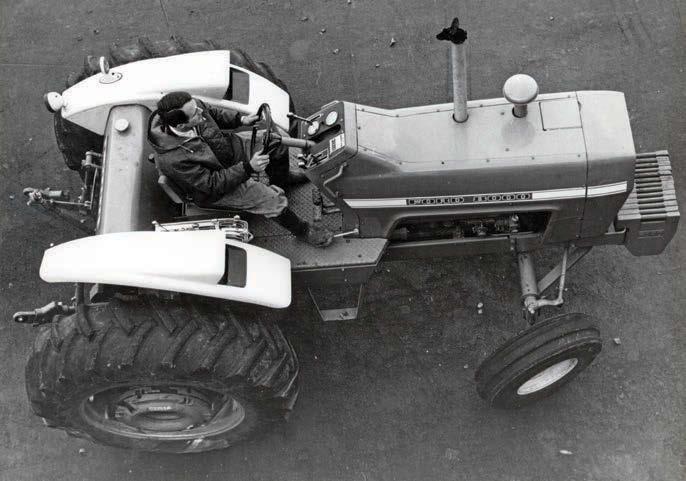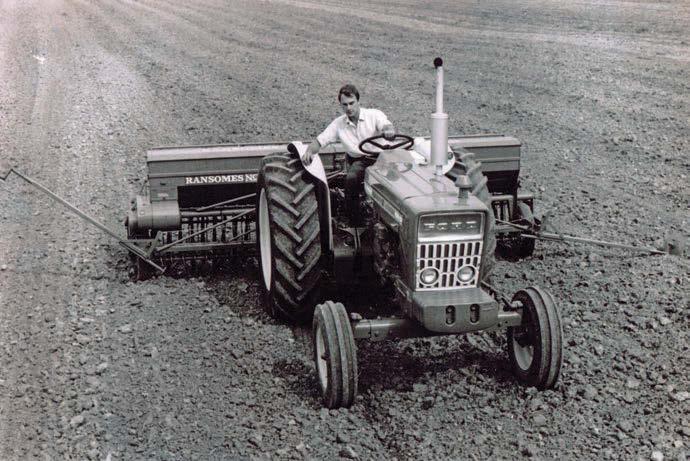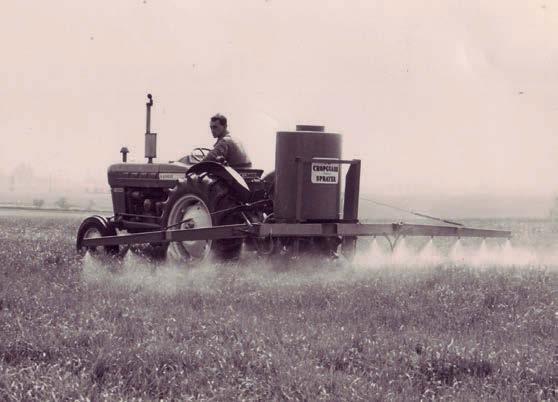
9 minute read
A LIFE WITH FORD
In this photograph, David Woods is seen training the President of the Australian YFC to operate a Ford 2000. All photos: courtesy of David Woods.

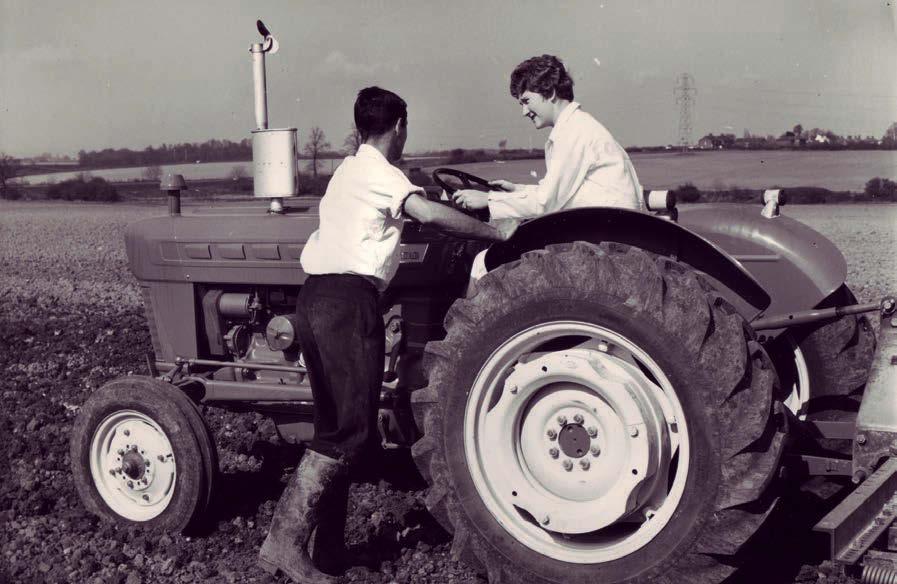




David Woods spent four decades with Ford Tractor Operations. He recalls some memories from the ’60s.
David with a Ford 2000 and Ransomes Cropguard sprayer in 1965.
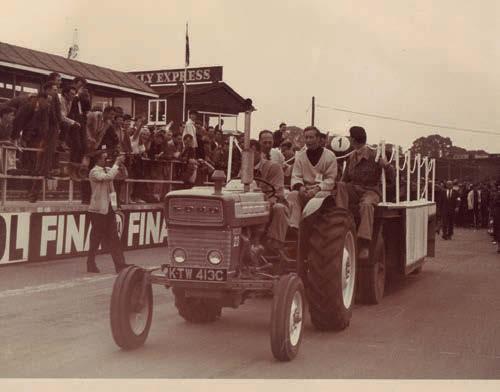
D avid Woods started his career with the Ford Motor Company Ltd. on 7 March 1960, when he joined the International Statistics and Market Research section of the Product Planning department at
Dagenham. This was a time when the
Fordson Dexta and Major were big players in the market, but scheduled to be replaced by a brand-new range of tractors.
It had been planned that the Tractor
Division, as it was then known, would vacate the
Dagenham plant by early 1964 to allow Ford to build car engines. Tractor production would switch to a new, purpose-built plant at Basildon.
“No other tractor manufacturer had ever contemplated producing a completely-new product line and a new manufacturing plant at the same time,” David told T&M. “It was a plan full of timing risks. Not only that, but the transmissions and rear axles were to be made in another plant in Antwerp, Belgium.
“In the early ’60s, Massey Ferguson was stealing more and more of Ford’s traditional market share in the 50hpplus tractor class with the MF 65, that was a much more modern product than the Super Major. Something had to be done – and fast!
“The launch of the Dexta in 1957, followed by the Super Dexta, was beginning to hit Massey in its traditional sector. These models did not really require any change at all. However the die was cast and the fi nal decisions to proceed with the 6X line were authorised by Henry Ford II.”
The New Performance Fordsons were launched in the summer of 1963 and other than the new blue and grey livery there were few other major changes. The colour scheme was key, as it heralded the arrival of the new 6X range of tractors – the fi rst to come out of Basildon.
At this point David had joined the Product Training staff at the Mechanised Farming Centre, at Boreham House in Essex. His main qualifi cation for this new job, he says, was farming ➤

Ford supplied a 3000 for several Silverstone-based race meetings in the 1960s. On this occasion, David ‘chauffeured’ Mike Hailwood and his motorcycle on a parade lap, to the crowd’s delight.
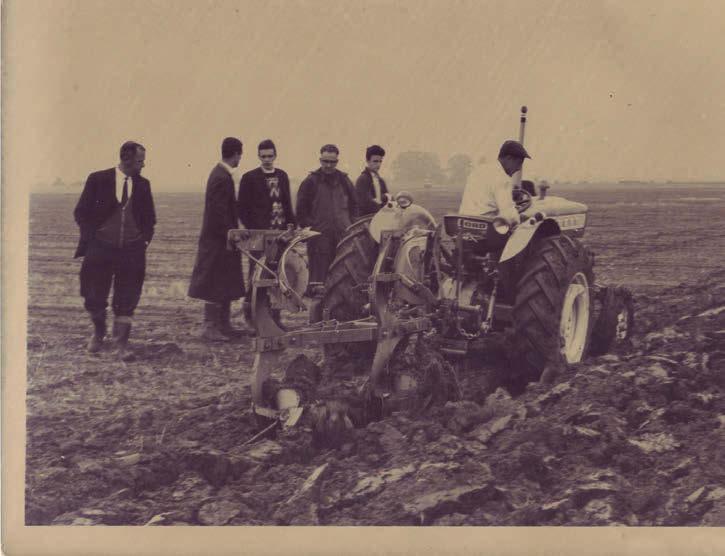
Ford dealer Gates of Baldock’s 24-hour ploughing marathon, in 1965, featured both 3000 and 5000 models. In this photo David is ploughing with a 3000 and Ransomes TS 82. David driving a Ford 3000 Select-O-Speed at the 1966 British Grand Prix, Silverstone, with Jack Brabham.


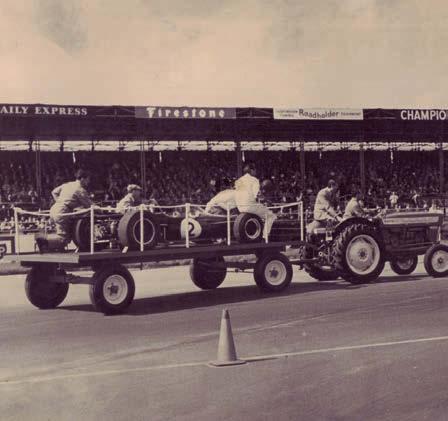
experience on a dairy farm in Kent, as a tractor driver and general farm worker. tractor driver and general farm worker. This experience was to count for very little though, as he discovered after just a few weeks at Boreham that his knowledge of Ford tractors was virtually zero compared to colleagues such as qualifi ed trainers Martin Brown and Jim Daniel.
Thankfully, he got to grips with the products with the help of Geoff Tiplady, and it was this solid grounding of the Fordson models that stood him in good stead for the arrival of the 6X 2000, 3000, 4000 and 5000, which were planned to be sent to Boreham early in 1964 – including some fi tted with the new Select-O-Speed (S-O-S) transmission.
It would be the summer of that year when prototypes and pre-production models eventually arrived for evaluation and training purposes. The prototypes, David recalls, were hand-built tractors using components that did not necessarily meet correct material specifi cation.
The machines that made up this fi rst batch featured warning plates affi xed to the mudguards by the Product Engineering department, advising against using them in the fi eld, largely because of the quality of the materials used to build them.
PROBLEMS
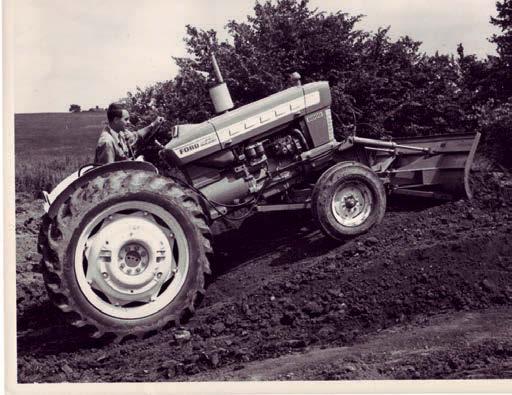
“There was no way that these tractors would be treated delicately by us, as we could not wait to get them in the fi eld and get a feel for Select-O-Speed,” David remarked. “So each of the warning plates was removed and off we went with ploughs and cultivators, like children with new toys at Christmas!
“We spent hours in the fi eld putting “We spent hours in the fi eld putting these new models through their paces. these new models through their paces. Early problems included S-O-S levers that broke easily and hydraulic cavitation on the three-cylinder models when using a loader on an incline. The external pump was very prone to oil aeration that stopped the hydraulics completely.
“Product Engineering staff were up and down to Boreham as our list of problems grew. However, what we did not know at the time was that these engineering prototypes actually were much more reliable than the early production models!”
David and his colleagues experienced some diffi culty getting the Select-OSpeed transmission to change gear smoothly, especially fourth to fi fth. The unit was made in the Highland Park plant in Michigan, USA, and was supposed to be adjusted ready for assembly, but Mike Hutton, the senior service instructor, established that there were defects in the adjustment of the brake bands and clutches in the UK transmissions.
He developed a new adjustment procedure at Boreham that was immediately adopted at Basildon, but the fourth to fi fth shift remained a problem that led to the ‘jerk-o-matic’ jibe from Ford’s rivals.
By mid-1964 Boreham’s training staff were working hard to develop dealertraining materials for the David in the seat of a top-of-therange Ford 5000 at Boreham House. launch of 6X. This was the most important event ever in the company’s history and with the date set for 10 October 1964, at the Radio City Music Hall in New York, it was all hands on deck.
It was not envisaged that Basildon and Boreham would be directly involved in the launch across ‘The Pond’, but a phone call from the USA, in August of that year, was met with frantic activity in the UK. Four tractors were needed for the New York event and so it was a race to make them ready and get them loaded on to the QE2 at Southampton for their voyage to North America.
The tractors returned in October and were soon back in the Essex mud, playing their part in dealer training. “The 6X dealer launch was a big success, but now Boreham had to play its part by training every company and dealer employee involved in sales, marketing and service, starting mid-October,” David explained.
“There were three two-day courses each week for dealer management and sales staff. These ran right up to Christmas and on into the New Year

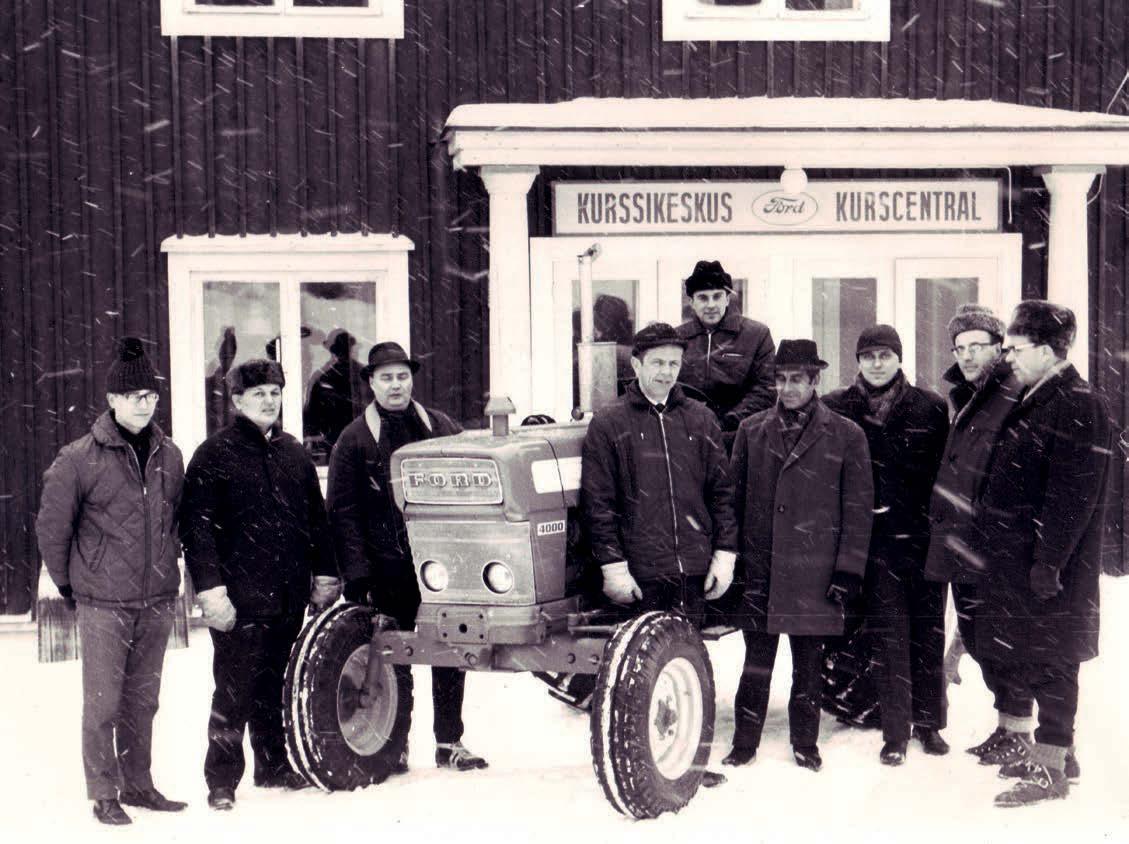
The 4000 would go on to become the best-selling model in the range. Here, David (seated) is seen at the Ford Training Centre in Helsinki.

before we got everyone through. We had to get as many people as possible trained before the public launch at the Smithfi eld Show that was to be crucial to the future of Ford tractors.”
STRETCHED

“At the start of 1965, sales of the new 6X line were rapidly expanding and it was not long before the well-known product problems began,” David continued. “This stretched our service capability to the absolute limit, as well as the new Parts Depot at Basildon. The concern for us in training was that the reliability of the production tractors was not the same as the prototypes.
“In hindsight, there is no doubt that the Ford Motor Company was extensively challenged by the 6X and very quickly moved on to design the 6Y product. This was marketed as a complete fi x for all the delinquencies of the 6X tractors. New hood and grille styling was used to try and convince both dealers and farmers that we had fi xed the gremlins for once and all. It worked, and there were lots of ➤ David clearing the pond at Boreham House with a 5000 and McConnel excavator.
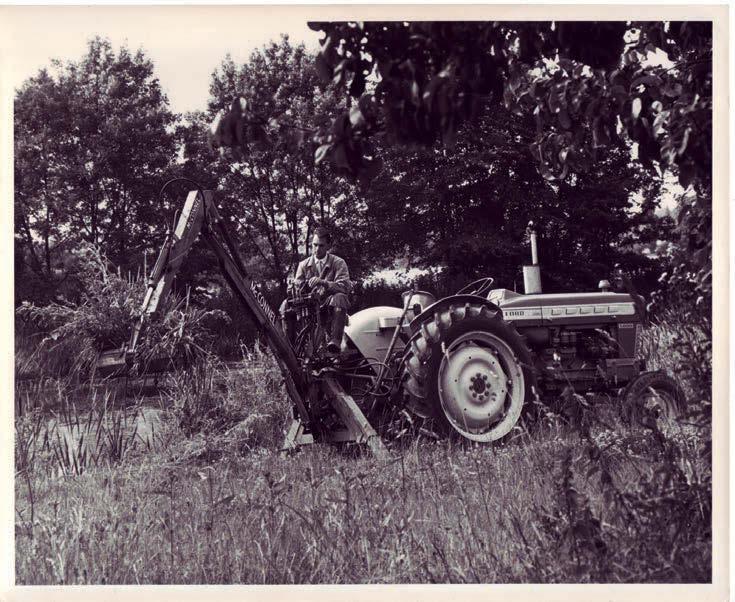
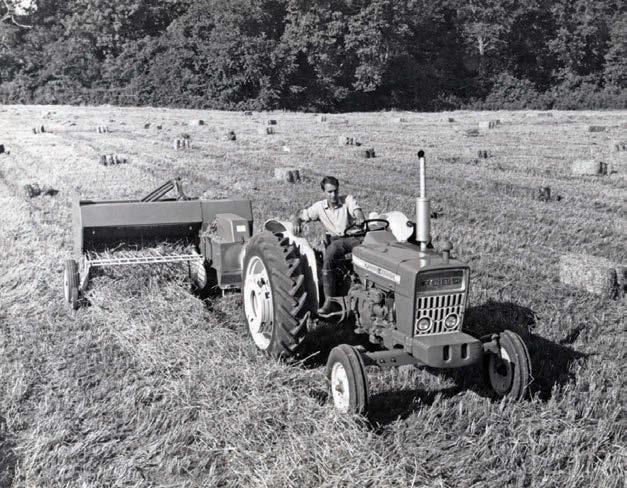

The arrival of the Ford Force range finally gave the company something to shout about.
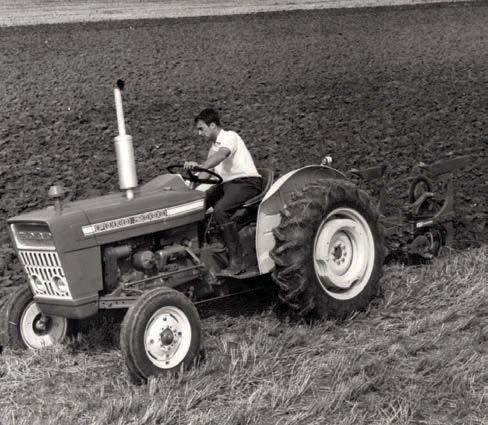


smiling faces when we emerged from the real depression of the 1965-67 era.”
The Ford Force line, known internally as 6Y, was, by all accounts, a huge success – but in a bid to bolster its line-up and cater for the needs of those that needed a larger tractor, the big 8000 was introduced in 1968 as a high-horsepower alternative to the British-built 2000, 3000, 4000 and 5000.
David was manager of the Ford Tractor Training Centre at this point and was photographed with the 8000 at Boreham. He recalls the model with particular frustration. “Frankly, this tractor was designed for the US prairies and was not really suited to Europe,” he said.
“It was too heavy and had wheels that were too wide for ploughing. However it was good for contract silage making, with excellent PTO power. It was basically a contractor machine, or used on very large estates where the power available could be used.
“We had one Ford 8000 at Boreham House for evaluation – for dealers to look at and try. It needed four-wheel drive to make it really a useful machine in Europe.”
With the arrival of the 1970s came the turbocharged 7000 and the Sankey-built ‘Q’ cab – both icons in their own right. David’s career would take in these additions to Ford’s tractor division and many other milestones in the next 30 years.
“I was manager of International Training at Boreham House for two years, before taking responsibility for Northern Europe Sales and then Dealer Network development in that region. Then I retired gracefully!” he exclaimed. “I enjoyed every day of my career with Ford Tractor Operations, Ford New Holland, and fi nally Case New Holland.” ■ A Ford 8000 was sent to Boreham House for evaluation. David is seen here getting to grips with it.

